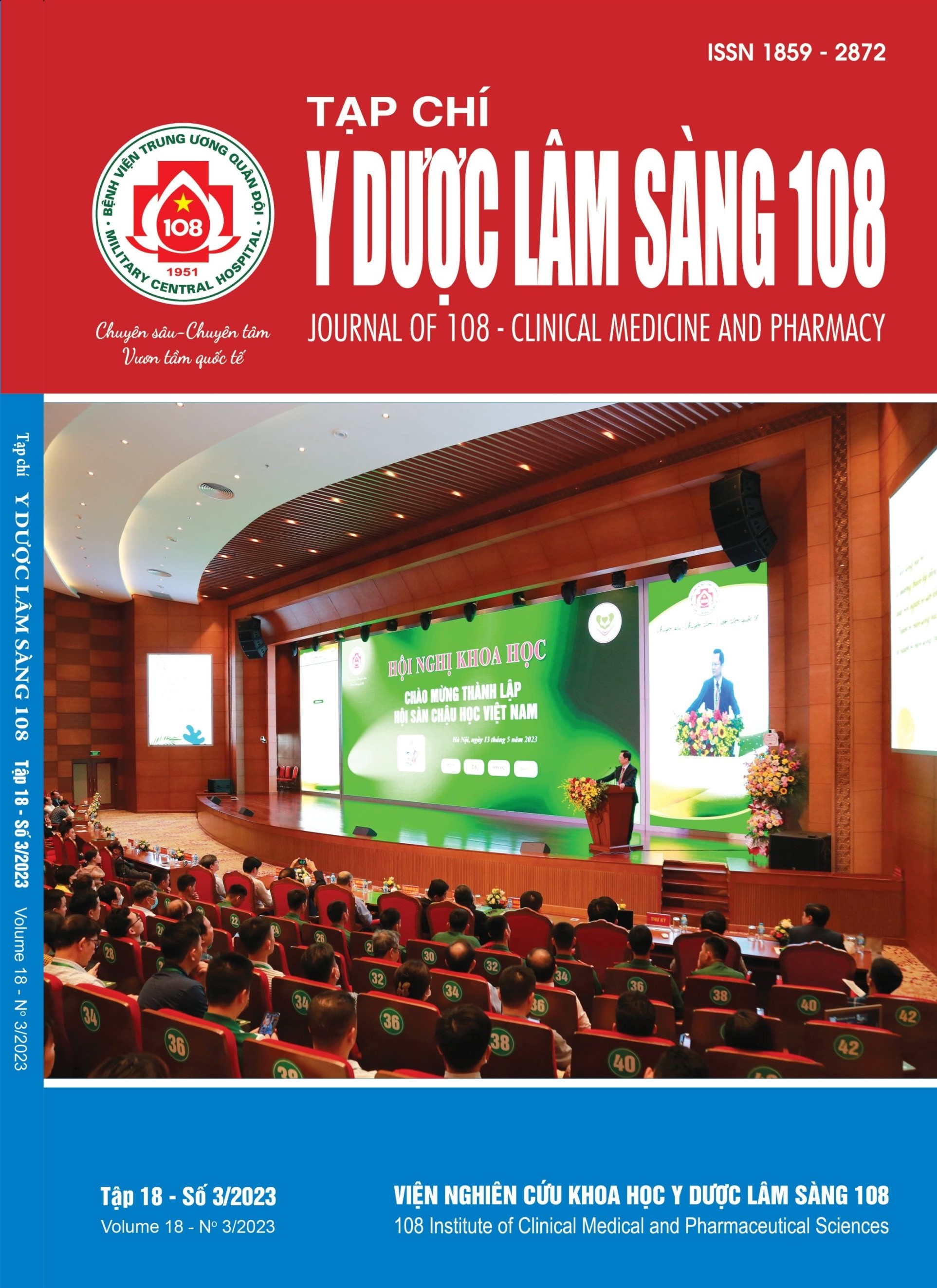Antimicrobial resistance and treatment of Staphylococcus aureus and enterococci infections at University Medical Center Ho Chi Minh City from 6/2021 to 3/2022
Main Article Content
Keywords
Abstract
Objective: Resistance of Staphylococcus aureus and enterococci to antibiotics has increased rapidly worldwide and poses many treatment challenges in selecting the appropriate antimicrobials. This study aims to investigate the antimicrobial resistance of S. aureus and enterococci and the antimicrobial regimens in infection treatment due to these pathogens. Subject and method: A cross-sectional study was conducted on 304 inpatients infected due to at least one of the three pathogens, including S. aureus, E. faecalis, and E. faecium, from 6/2021 to 3/2022 at University Medical Center Ho Chi Minh City. Result: MRSA accounted for 76.3% of S. aureus isolates. 98.2% of S. aureus and 13.5% of E. faecalis isolates were resistant to penicillin, and none of them was resistant to vancomycin or linezolid. The proportions of E. faecium isolates resistant to penicillin G, vancomycin, daptomycin, and linezolid were 84.5%, 40.7%, 98.1%, and 1.8%, respectively. The value of vancomycin MIC and linezolid MIC for most isolates was ≤ 1mg/L and ≤ 2mg/L, respectively. Vancomycin was the most empiric antimicrobial used (45.1%). The combination of two empiric antimicrobials accounted for the highest proportion, with 53.6%. In the group of patients who had to adjust the initial antimicrobial, 58.8% of cases used empiric antimicrobials that were appropriate with these isolates. Conclusion: The high proportions of MRSA and vancomycin-resistant E. faecium were documented in our study. It is necessary to adjust antibiotic regimens using the susceptibility testing results to enhance the appropriateness of antibiotic use
Article Details
References
2. Bệnh viện Đại học Y Dược Thành Phố Hồ Chí Minh (2021) Báo cáo về tình hình đề kháng KS của các chủng VK phân lập được tại Bệnh viện Đại học Y Dược Thành Phố Hồ Chí Minh.
3. Nguyễn Thị Thanh Hiền và Nguyễn Như Hồ (2021) Khảo sát việc sử dụng KS trong điều trị nhiễm khuẩn huyết do Staphylococcus aureus tại các khoa ICU Bệnh viện Chợ Rẫy. Tạp chí Y học thành phố Hồ Chí Minh 25(4), tr. 123-129.
4. Nguyễn Thị Huỳnh, Hà Nguyễn Y Khuê, Đặng Nguyễn Đoan Trang (2021) Khảo sát việc sử dụng KS trong điều trị nhiễm khuẩn da mô mềm tại Bệnh viện Đại học Y Dược thành phố Hồ Chí Minh. Tạp chí Y Dược lâm sàng 108. Tr. 128-134.
5. Đặng Nguyễn Đoan Trang (2019) Khảo sát và đánh giá hiệu quả theo dõi nồng độ vancomycin trong trị liệu tại Bệnh viện Đại học Y Dược thành phố hồ chí minh. Nghiên cứu Dược và thông tin thuốc, tr. 30-37.
6. Trần Thị Thanh Nga (2013) Tác nhân gây nhiễm trùng tiểu và tình hình đề kháng KS tại bệnh viện Chợ Rẫy. Tạp chí Y học Thành phố Hồ Chí Minh 18(4).
7. Clinical and Laboratory Standards Institute (CLSI) (2020) M100 Performance Standards for Antimicrobial Susceptibility Testing, 31th Edition. Wayne, PA: CLSI.
8. Thai Son N, Thu Huong VT, Kim Lien VT et al (2020) Antimicrobial resistance profile and molecular characteristics of Staphylococcus aureus isolates from hospitalized adults in three regions of Vietnam. Jpn J Infect Dis 73(3): 193-200.
 ISSN: 1859 - 2872
ISSN: 1859 - 2872
